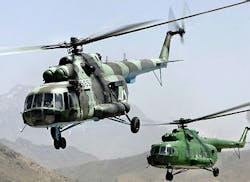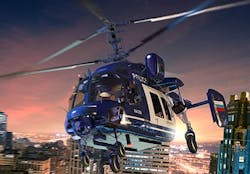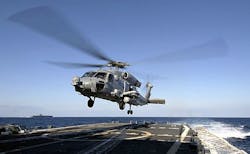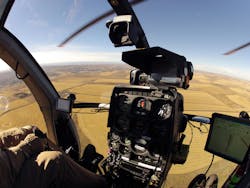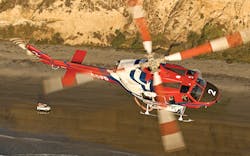Spotlight on helicopter safety
- NAME: Fred Brisbois
- TITLE: Co-chair, U.S. Safety Implementation Team
- CO.: International Helicopter Safety Team (IHST) Executive Committee
- ROLE: Global industry/government group focused on cutting accident rates
CONTACT: www.ihst.org
Rotorcraft professionals are focusing a great deal of attention on tools that aid in helicopter pilot situational awareness. Why is that the case?
An IHST analysis of accident investigations covering 523 helicopter accidents over a three-year period identified pilot judgment and actions as the number one problem, involved in 84 percent of the accidents.
In some cases, pilot actions are due to a lack of proper situational awareness. The same analysis specifically identified situational awareness as a problem in 31 percent of the accidents.
Accidents are typically caused by more than one specific event. There is not a ‘silver bullet’ or single intervention to prevent an accident, but improving situational awareness is an intervention that affords an opportunity to improve pilot decision making and reduces the probability of an improper decision that may result in an accident.
Why are helicopter terrain avoidance systems (HTAWS) valuable?
HTAWS provide a multifarious opportunity to prevent accidents and save lives. The most direct benefit is a warning of impending collision with terrain with sufficient time for the pilot to correct his flight path to avoid a collision. In addition to terrain avoidance warnings, some systems are capable of providing warnings to prevent wire strikes and other manmade obstacles.
What is the requirement or recommendation in the U.S. for HTAWS or similar situational awareness tools?
The installation of proximity detection systems is one of the top 20 recommendations of the U.S. International Helicopter Safety Team (IHST). In my former position as Director of Aviation & Product Safety for Sikorsky Aircraft Corp., we determined that the Enhanced Ground Proximity Warning System (EGPWS) we developed with Honeywell could have prevented more than one-third of the accidents involving our aircraft. The benefits were so profound, that we made EGPWS a standard item on all our S-76 and S-92 aircraft.
What single piece of advice would you give engineers related to selecting an HTAWS or other helicopter avionics related to safety and situational awareness?
Keep it simple. We don’t need avionics systems that provide an output for everything that technology is capable of producing. In the end, it’s the human pilot who has to recognize the output, interpret it, and respond to it.
Focus technology on providing equipment with multiple uses. For example, an HTAWS system that can digitally store data in a buffer that is easily downloaded can be used by operators to manage a flight data monitoring program to improve standardization and quality assurance of flight operations. We need reliable, lightweight, affordable systems that can predict an impending impact with terrain or obstacles and give adequate warning to the pilot as well recording flight data.
